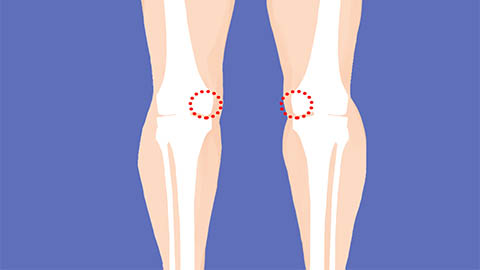What are the conservative treatment methods for knee joint?
Generally, conservative treatment methods for the knee joint include rest and immobilization, physical therapy, medication, rehabilitation exercises, and assistive devices. When experiencing knee discomfort, conservative treatment can be initially attempted, and if symptoms do not improve, timely medical evaluation is necessary. Detailed analysis is as follows:
1. Rest and Immobilization
Excessive activity can worsen cartilage wear and soft tissue irritation when the knee joint is injured or inflamed. Reducing weight-bearing activities such as walking and climbing stairs, and using a cane for assistance when necessary, allows the knee joint to rest adequately, alleviates joint pressure, prevents further injury, and creates conditions for tissue repair. Therefore, rest should be prioritized during the acute phase.

2. Physical Therapy
Symptoms can be relieved through methods such as hot compresses, cold compresses, and ultrasound therapy. Cold compresses during the acute phase constrict blood vessels, reducing local bleeding and swelling; heat compresses in the chronic phase promote blood circulation, relieving muscle spasms and pain; ultrasound therapy penetrates deep into tissues, promoting inflammation absorption and improving local metabolism. These methods help alleviate discomfort and facilitate joint function recovery, making them commonly used foundational approaches in conservative treatment.
3. Medication
Appropriate medications are selected based on symptoms. For significant pain, non-steroidal anti-inflammatory drugs (NSAIDs) such as ibuprofen sustained-release capsules or celecoxib capsules can be taken under a physician's guidance to reduce inflammation and pain. Patients with cartilage damage may use glucosamine hydrochloride capsules to promote cartilage repair. If necessary, sodium hyaluronate injection can be administered into the joint cavity to enhance joint lubrication, reducing friction. These medications effectively target symptoms and slow disease progression.
4. Rehabilitation Exercises
Moderate exercise can be performed after pain relief, such as straight leg raises: lying flat, extending the leg and lifting it to 30°, holding for several seconds before lowering. This strengthens the quadriceps and improves knee stability. Wall squats can strengthen muscles around the knee joint, improving joint load distribution. Low-impact activities like walking and swimming help maintain joint mobility and prevent muscle atrophy. These exercises should be performed progressively, as overexertion may worsen injuries. Therefore, professional guidance is recommended.
5. Assistive Devices
Appropriate braces are selected based on knee conditions. Knee supports provide stability during activity, reducing joint load. Patients with collateral ligament injuries may use knee stabilizers to limit abnormal joint movement and protect injured ligaments. Individuals with mild varus or valgus deformities can wear orthopedic braces to adjust joint load distribution. These devices help protect the joint, reduce external irritation, and maintain joint function.
In addition, daily activities should avoid prolonged kneeling or squatting and heavy lifting. Wearing soft-soled shoes can reduce joint impact. If symptoms do not improve after 3–6 months of conservative treatment or if joint locking and restricted movement worsen, timely consultation with an orthopedic specialist is advised to evaluate the need for further treatment.







